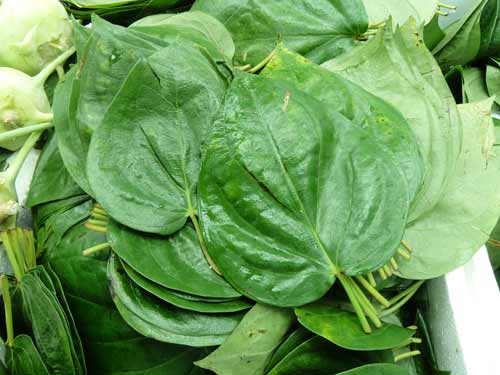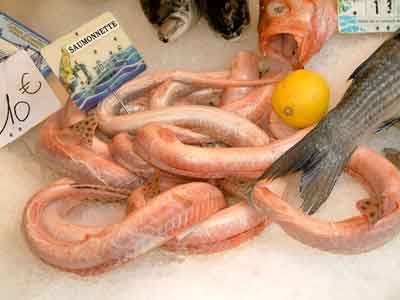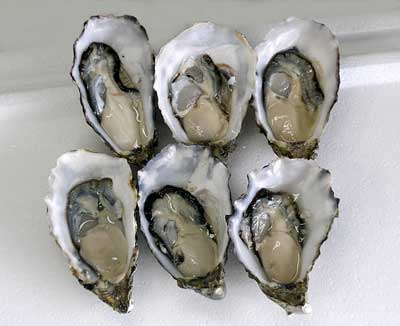Very different from the East Asian oyster sauces, the European oyster sauce is béchamel sauce with a little added cream, cayenne pepper, juice from oysters and poached oysters.
A sauce which is used as an additive to many Chinese dishes, it consists of soya sauce and dried oysters. Very different from the European version which is based on béchamel sauce.

The paan leaf is a betle leaf, chewed as a palate cleanser, a breath freshener, and for digestive purpose
Barracuda. A large marine fish from the same family as grey mullet (US: striped mullet). Small versions grow to about 30 cm (12 inches) but it can grow as large as 120-150 cm (4-5 ft) long. It has large jaws, strong, sharp teeth and a slender, streamlined body with small scales. The back is dark with some brown, some greenish- and some bluish-grey, depending on the species, with a pale underbelly. It has firm, white, well-flavoured flesh. Steaks can be grilled, fried or barbecued and then marinated, eaten hot or cold. Whole fish can be poached or baked. In American markets they are most likely to be Pacific or California barracuda. Watch out for the very large Caribbean barracuda, which has poisonous flesh.
Bonito, or skipjack tuna.This is a migratory fish which is available up to 25 lb (11.3 kg). Although it is often sold as tuna, it is not a tuna at all. They live in shoals in warm seas. Dried shavings are indispensable in many Japanese dishes as the basis of the flavouring for stocks and broths. In the Maldives it is usually cured by boiling, smoking and sun-drying until it is as hard as a piece of wood. This enables it to be kept for a long time. It is used in Sri Lanka in the equivalent of nam pla-like fish sauces.

Spurdog. The spurdog is a type of small shark or dogfish, said to make the best eating of all the dogfish. Also known as rock salmon. It is useful for its medium oily white flesh and is generally versatile. It grows 2-3 metres in length.or nursehound or, in some places, as rock salmon or rock eel. Spurdog, smoothound and tope are all sold as huss. It is an excellent addition to soups because of its texture. It feeds on shellfish which flavours its own firm, white flesh.
Pacific halibut. A variety of halibut found in the Pacific from California to Canada. It is a fish which has firm, lean white flesh with a sweet flavour.

The season for Pacific oysters is 1st September to 30 April (the traditional months with an 'r' in them) in the United States though, of course, in the Antipodes, they will be breeding at the opposite end of the year, in November, December and January. Large Pacific oysters are inclined to be fatty and are improved by cooking. In Australia Pacific Oysters may also be known as Coffin Bay or Japanese Oysters. They have a chalky whitish outer shell with deep dark markings with occasional purple or red patches and with spikey lobes and protrusions, very different from other generally smoother oysters. The basic shape, under the spikes and protrustions, is quite oval. It is found in estuaries and on rocky shores and grows more quickly than other oysters, particularly the Sydney rock oyster. It was introduced to Tasmania from Japan, where it now thrives, as it does in southern Australia, and has a stronger flavour and bigger muscle than the Sydney rock oyster.
Alaskan pollack, a variety of pollack from the north west Pacific off Alaska. Pollacks are members of the cod family and weigh around 1 kg (2 lb). They have rather grey, flaky flesh and are often salted and dried or pickled and are also commonly used for making imitation shellfish foods. The salted roes are prized in Japan. Pollacks are also known as pollocks.